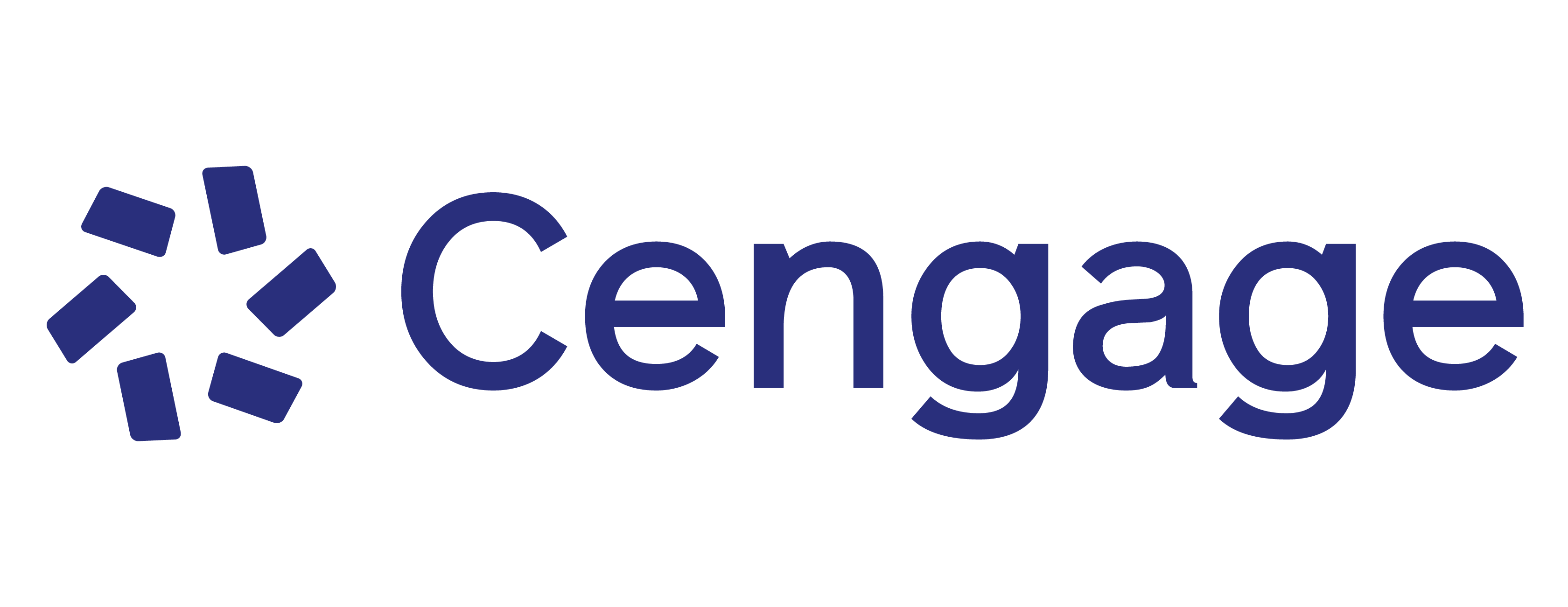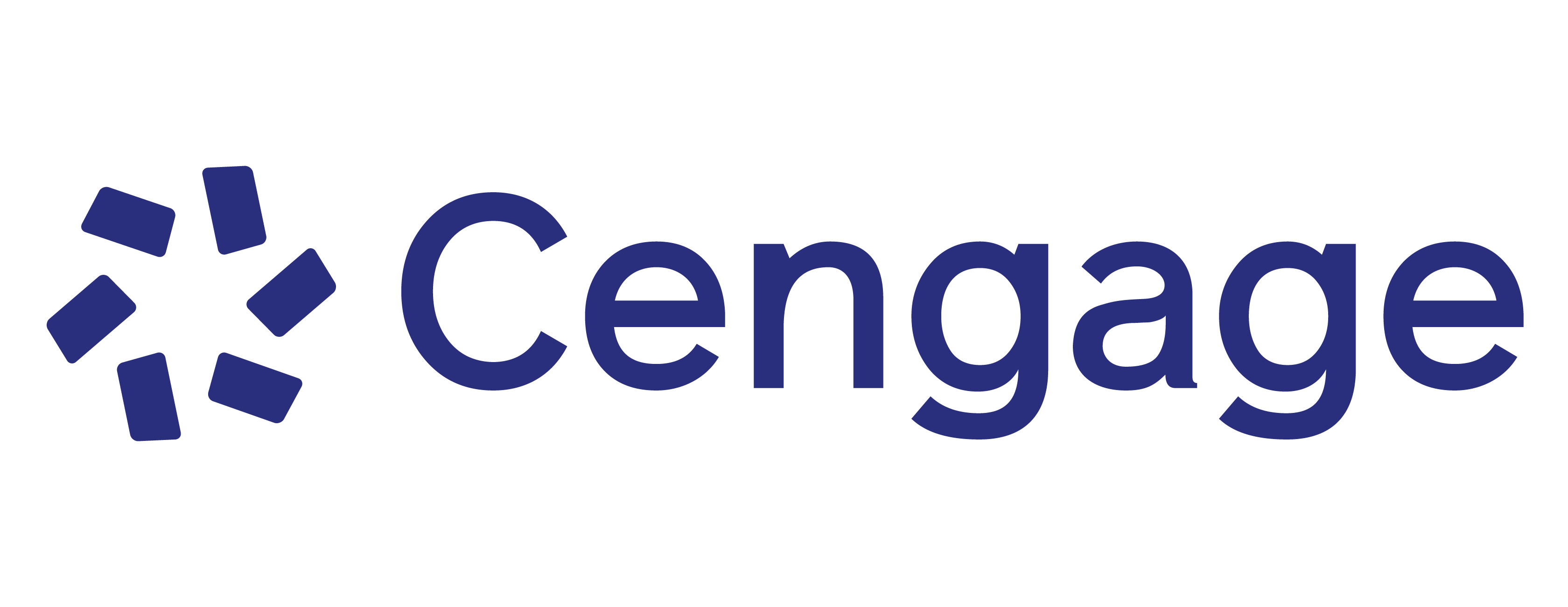Ideal for courses that require the use of a graphing calculator, ALGEBRA AND TRIGONOMETRY: REAL MATHEMATICS, REAL PEOPLE, 6th Edition, features quality exercises, interesting applications, and innovative resources to help you succeed. Retaining the book's emphasis on student support, selected examples include notations directing students to previous sections where they can review concepts and skills needed to master the material at hand. The book also achieves accessibility through careful writing and design—including examples with detailed solutions that begin and end on the same page, which maximizes readability. Similarly, side-by-side solutions show algebraic, graphical, and numerical representations of the mathematics and support a variety of learning styles. Reflecting its subtitle, this significant revision focuses more than ever on showing readers the relevance of mathematics in their lives and future careers.
CHAPTER P PREREQUISITES.
P.1. Real Numbers. P.2. Exponents and Radicals. P.3. Polynomials and Factoring.
P.4. Rational Expressions. P.5. The Cartesian Plane. P.6. Representing Data Graphically. Chapter Summary. Review Exercises. Chapter Test. Proofs in Mathematics.
1. FUNCTIONS AND THEIR GRAPHS.
Introduction to Library of Functions.1.1 Graphs of Equations. 1.2 Lines in the Plane.
1.3 Functions. 1.4 Graphs of Functions.1.5 Shifting, Reflecting, and Stretching Graphs.
1.6 Combinations of Functions. 1.7 Inverse Functions. Chapter Summary. Review Exercises. Chapter Test. Proofs in Mathematics.
2. SOLVING EQUATIONS AND INEQUALITIES.
2.1 Linear Equations and Problem Solving. 2.2 Solving Equations Graphically. 2.3 Complex Numbers. 2.4 Solving Quadratic Equations Algebraically.
2.5 Solving Other Types of Equations Algebraically. 2.6 Solving Inequalities Algebraically and Graphically. 2.7 Linear Models and Scatter Plots. Chapter Summary.
Review Exercises. Chapter Test. Cumulative Test: Chapters P−2. Proofs in Mathematics. Progressive Summary (Ch P−2).
3. POLYNOMIAL AND RATIONAL FUNCTIONS.
3.1 Quadratic Functions. 3.2 Polynomial Functions of Higher Degree. 3.3 Real Zeros of Polynomial Functions. 3.4 The Fundamental Theorem of Algebra. 3.5 Rational Functions and Asymptotes. 3.6 Graphs of Rational Functions. 3.7 Quadratic Models.
Chapter Summary. Review Exercises. Chapter Test. Proofs in Mathematics.
4. EXPONENTIAL AND LOGARITHMIC FUNCTIONS.
4.1 Exponential Functions and Their Graphs . 4.2 Logarithmic Functions and Their Graphs. 4.3 Properties of Logarithms. 4.4 Solving Exponential and Logarithmic Equations. 4.5 Exponential and Logarithmic Models. 4.6 Nonlinear Models. Chapter Summary. Review Exercises. Chapter Test. Cumulative Test: Chapters 3−4. Proofs in Mathematics. Progressive Summary (Ch P−4).
5. TRIGONOMETRIC FUNCTIONS.
5.1 Angles and Their Measure. 5.2 Right Triangle Trigonometry. 5.3 Trigonometric Functions of Any Angle. 5.4 Graphs of Sine and Cosine Functions. 5.5 Graphs of Other Trigonometric Functions. 5.6 Inverse Trigonometric Functions. 5.7 Applications and Models. Chapter Summary. Review Exercises. Chapter Test. Library of Parent Functions Review. Proofs in Mathematics.
6. ANALYTIC TRIGONOMETRY.
6.1 Using Fundamental Identities. 6.2 Verifying Trigonometric Identities. 6.3 Solving Trigonometric Equations. 6.4 Sum and Difference Formulas. 6.5 Multiple-Angle and Product-to-Sum Formulas. Chapter Summary. Review Exercises. Chapter Test. Proofs in Mathematics.
7. ADDITIONAL TOPICS IN TRIGONOMETRY.
7.1 Law of Sines. 7.2 Law of Cosines. 7.3 Vectors in the Plane. 7.4 Vectors and Dot Products. 7.5 Trigonometric Form of a Complex Number. Chapter Summary. Review Exercises. Chapter Test. Cumulative Test: Chapters 5−7. Proofs in Mathematics.
Progressive Summary (Ch P−7).
8. LINEAR SYSTEMS AND MATRICES.
8.1 Solving Systems of Equations. 8.2 Systems of Linear Equations in Two Variables.
8.3 Multivariable Linear Systems. 8.4 Matrices and Systems of Equations. 8.5 Operations with Matrices. 8.6 The Inverse of a Square Matrix. 8.7 The Determinant of a Square Matrix. 8.8 Applications of Matrices and Determinants. Chapter Summary. Review Exercises. Chapter Test. Proofs in Mathematics.
9. SEQUENCES, SERIES, AND PROBABILITY.
9.1 Sequences and Series. 9.2 Arithmetic Sequences and Partial Sums. 9.3 Geometric Sequences and Series. 9.4 The Binomial Theorem. 9.5 Counting Principles. 9.6 Probability. Chapter Summary. Review Exercises. Chapter Test. Proofs in Mathematics.
10. TOPICS IN ANALYTIC GEOMETRY.
10.1 Circles and Parabolas. 10.2 Ellipses. 10.3 Hyperbolas. 10.4 Parametric Equations. 10.5 Polar Coordinates. 10.6 Graphs of Polar Equations. 10.7 Polar Equations of Conics.
Chapter Summary. Review Exercises. Chapter Test. Cumulative Test: Chapters 8−10.
Proofs in Mathematics. Progressive Summary (Ch P−10).
Appendix A: Technology Support Guide.
Appendix B: Concepts in Statistics (WEB only).
B.1 Measures of Central Tendency and Dispersion. B.2 Least Squares Regression.
Appendix C: Variation (WEB only).
Appendix D: Solving Linear Equations and Inequalities (WEB only).
Appendix E: Systems of Inequalities (WEB only).
E.1 Solving Systems of Inequalities. E.2 Linear Programming.
Appendix F Mathematical Induction (WEB only).
-
Ron Larson
Dr. Ron Larson is a professor of mathematics at the Pennsylvania State University, where he has taught since 1970. He is considered the pioneer of using multimedia to enhance the learning of mathematics, having authored more than 30 software titles since 1990. Dr. Larson has also written numerous acclaimed textbooks, including the best-selling Calculus Series published by Cengage. He is the recipient of the 2017 William Holmes McGuffey Longevity Award for PRECALCULUS, the 2018 Text and Academic Authors Association TEXTY Award for CALCULUS: EARLY TRANSCENDENTAL FUNCTIONS and the 2017 William Holmes McGuffey Longevity Award for CALCULUS. He also received the 1996 Text and Academic Authors Association TEXTY Award for INTERACTIVE CALCULUS -- a complete text on CD-ROM that was the first mainstream college textbook to be offered on the internet.
-
NOTE: This title is also available in WebAssign with Corequisite Support that provides the flexibility to match any corequisite implementation model and empowers you to deliver high quality content at the right time for your students at an affordable price.
-
New Chapter Opener. Each Chapter Opener highlights real-life applications used in the examples and exercises.
-
New How Do You See It? The How Do You See It? feature in each section presents a real-life exercise students solve by visual inspection using the concepts learned in the lesson. This exercise is excellent for classroom discussion or test preparation.
-
New Checkpoints. Accompanying every example, the Checkpoint problems encourage immediate practice and check students' understanding of the concepts presented in the example. Students can view and listen to worked-out solutions of the Checkpoint problems in English or Spanish at LarsonPrecalculus.com.
-
New Data Spreadsheet. Downloadable, editable spreadsheets from LarsonPrecalculus.com that help students use the data to solve exercises.
-
New LarsonPrecalculus.com. This free companion website offers multiple tools and resources to supplement your students' learning. Students can view and listen to worked-out solutions of Checkpoint problems in English or Spanish, download data sets, explore examples, watch lesson videos, and much more.
-
Side-By-Side Examples. Throughout the text, we present solutions to many examples from multiple perspectives-algebraically, graphically, and numerically. The side-by-side format of this pedagogical feature helps students to see a problem can be solved in more than one way and to see different methods yield the same result. The side-by-side format also addresses many different learning styles.
-
Why You Should Learn It Exercise. An engaging, real-life application of the concepts in the section, this application exercise is typically described in the section opener as a motivator for the section.
-
Library of Parent Functions. Several elementary and non-elementary functions have been compiled as a Library of Parent Functions to facilitate familiarity with the basic functions. Each function is introduced at the first point of use in the text with a definition and description of basic characteristics. The Library of Parent Functions examples are identified in the title of the example and there is a Review of Library of Parent Functions after Chapter 4. A summary of functions is presented on the inside cover of this text.
-
Make a Decision. The Make a Decision exercises at the end of selected sections involve in-depth applied exercises in which students work with large, real-life data sets, often creating or analyzing models. These exercises are offered online at LarsonPrecalculus.com.
-
Side-By-Side Examples. Throughout the text, we present solutions to many examples from multiple perspectives-algebraically, graphically, and numerically. The side-by-side format of this pedagogical feature helps students to see a problem can be solved in more than one way and to see different methods yield the same result. The side-by-side format also addresses many different learning styles.
-
Why You Should Learn It Exercise. An engaging, real-life application of the concepts in the section, this application exercise is typically described in the section opener as a motivator for the section.
-
Make a Decision. The Make a Decision exercises at the end of selected sections involve in-depth applied exercises in which students work with large, real-life data sets, often creating or analyzing models. These exercises are offered online at LarsonPrecalculus.com.
-
Explore the Concept. Each Explore the Concept engages students in active discovery of mathematical concepts, strengthens critical thinking skills, and helps build intuition.
-
What's Wrong. Each What's Wrong points out common errors made using graphing utilities.
-
Technology Tip. Technology Tips provide graphing calculator tips or provide alternate methods of solving a problem using a graphing utility.
-
Algebra of Calculus. Throughout the text, special emphasis is given to the algebraic techniques used in calculus. Algebra of calculus examples and exercises are integrated throughout the text.
-
Algebraic-Graphical-Numerical Exercises. These exercises allow students to solve a problem using multiple approaches—algebraic, graphical, and numerical. This helps students to see that a problem can be solved in more than one way and to see that different methods yield the same result.
-
Modeling Data Exercises. These multi-part applications that involve real-life data offer students the opportunity to generate and analyze mathematical models.
-
Vocabulary and Concept Check. The Vocabulary and Concept Check appears at the beginning of the exercise set for each section. Each of these checks asks fill-in-the-blank, matching, and non-computational questions designed to help students learn mathematical terminology and to test basic understanding of that section's concepts.
Cengage Testing, powered by Cognero® for Larson's Algebra and Trigonometry: Real Mathematics, Real People
9781305259027
Cengage Testing, powered by Cognero® for Larson's Algebra and Trigonometry: Real Mathematics, Real People, Instant Access
9781305259010
Complete Solutions Manual on Instructor's Companion Web Site: Algebra and Trigonometry: Real Mathematics, Real People, 7th
9781305252530
DVD: Algebra and Trigonometry: Real Mathematics, Real People, 7th
9781305252516
Instructor's Web Site + PowerPoint®, Image Library: Algebra and Trigonometry: Real Mathematics, Real People, 7th
9781305253551


